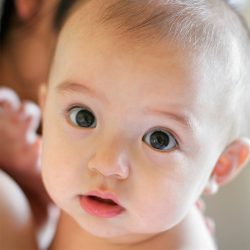(March 3, 2021)
A large, multi-site, international In Vitro Fertilization (IVF) Study supported by Salimetrics recently published results indicating potential advances in fertility treatment utilizing saliva samples.
In a multi-site study published in RBMO, “A multi-centre international study of salivary hormone oestradiol and progesterone measurements in ART monitoring,” In Vitro Fertilization (IVF) specialists examined whether ‘easy to collect’ saliva samples could be used as an alternative to serum for monitoring circulating reproductive hormones in women undergoing In Vitro Fertilization treatments. Backed by Salimetrics’ saliva collection devices and assay kits, fertility professionals from 6 independent IVF clinics in the USA and Europe evaluated 652 pairs of serum-matched saliva samples for the hormones oestradiol and progesterone. Results from this blind validation study suggest that saliva-based hormone tests have the capacity to become the preferred method of hormone monitoring for fertility treatments in the future. This research further echoes similar results from previous studies that have also shown good agreement between serum-saliva oestradiol levels.
For most couples and individuals, In Vitro Fertilization (IVF) often represents a physically and emotionally painful process. The potential to reduce frequent blood draws through an alternate sample type such as saliva would be a much-welcomed procedure and would significantly reduce the patient burden, especially for those who require multiple rounds of treatment. While this study builds on foundational research aimed to incorporate potential application, future research is needed to confidently establish effective cut-off values for hyperstimulation and support key decisions during superovulation.
Samples were evaluated for salivary oestradiol, with resulting saliva-serum correlations ranging from 0.68 in two European clinics, up to 0.87 and 0.91 in two US clinics. While some variability in the saliva sample values exists, researchers also noted differences in the serum values as well, which was expected due to differences in stimulation strategies. The study also noted that saliva provides an additional advantage over serum because current serum immunoassays for these hormones represent the total levels present, whereas saliva represents the biologically unbound (free) levels. Measuring the unbound levels of these hormones is generally preferred as it represents the levels which are biologically active at the time of sampling.
Salimetrics is once again honored to share in another landmark effort for salivary bioscience that aims to increase the clinical utility of saliva to benefit everyday lives. “Over the last 2 years, the interest in saliva-based applications has grown exponentially as researchers begin to translate scientific application into clinical practice,” says Supriya Gaitonde, Ph.D., Salimetrics Associate Director of Technical Applications. “For Salimetrics, the breadth of our expertise has enabled the use of saliva in both medical and non-medical fields and serves as a foundation for salivary bioscience data.” The ease and minimally invasive nature of saliva affords researchers the ability to study multi-level models of individual differences in both laboratory and real-world settings, and this IVF study provides further evidence of saliva’s potential for clinical applications.
As researchers continue to expand our understanding of reproductive health in an ever-changing world, Salimetrics continues to enable new methods, tools, and knowledge to build strong foundations in science. “Best methods for using saliva as a sample have come a long way; we continue to refine these best methods to reduce variability and increase utility in real-world settings,” says Steve Granger, Ph.D., Salimetrics Chief Scientific Officer. “Not only does Salimetrics rely on the latest knowledge to back their products and services, we also provide critical background knowledge that allows investigators to minimize variability and maximize the utility of oral fluid as a diagnostic specimen for use by researchers and clinicians worldwide.”
To learn more about how Salimetrics can support your research or application, visit the Salimetrics Website or Ask an Expert for more information.
About Salimetrics:
Salimetrics’ assay kits and CLIA-certified testing services are used to measure salivary analytes related to stress, behavior and development, inflammation, sleep, reproduction, health and immune function. Founded in 1998 by Douglas A. Granger, Ph.D., Salimetrics, LLC support CROs, pharmaceuticals, academic researchers and the immunodiagnostic industry around the world with innovative immunoassay products, non-invasive saliva collection methods, and laboratory testing services.
Read this article on PR Web
 Contact: Salimetrics (USA)
Contact: Salimetrics (USA)
